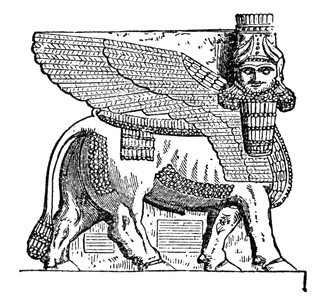 At the heart of the practice of mantra is the idea that everything is interconnected. Although the idea is not apparent in early Buddhist teachings it is strongly associated with the Mahāyāna Avataṃsaka Sūtra, and with the Buddhism that centres around it, often known by the Chinese equivalent: Huayen. The Avataṃsaka coalesced in the 3rd century though it is thought to be a composite work that accumulated parts over time. However the idea that everything is interconnected was not new to India at the time, but goes back to the earliest religious text: the Ṛg Veda.
At the heart of the practice of mantra is the idea that everything is interconnected. Although the idea is not apparent in early Buddhist teachings it is strongly associated with the Mahāyāna Avataṃsaka Sūtra, and with the Buddhism that centres around it, often known by the Chinese equivalent: Huayen. The Avataṃsaka coalesced in the 3rd century though it is thought to be a composite work that accumulated parts over time. However the idea that everything is interconnected was not new to India at the time, but goes back to the earliest religious text: the Ṛg Veda.In the Vedas the cosmos is divided into three realms: human, god, and intermediate or sky. The earliest gods were personifications of the awesome forces of nature: the sun, storms, and fire... The ancients believed, for instance, that a single principle linked all things which were hot or bright: the sun, fire, digestion, and even the spark of imagination. This particular principle was called Agni - sometimes referred to as the "god" of fire. Even in our technologically advanced times we are still subject to nature (think global warming!): how much more so were our ancient forebears! They desired control over the sun and the monsoons, and developed a kind of magic technology for doing so. The very early Vedic poets acted as shamans who were directly in contact with the gods and the Vedic hymns are records of their conversations with the gods, or their prayers to them. They became the keepers of the the sacred fire. The Agni was the hermetic messenger and fire was an exchange medium: sacrifices were transformed by the fire into smoke, and this was carried upwards to the gods who could consume it in that form. In return the gods were compelled to respond favourably.
The key to effective rituals was the "bandhu" or connection between this world and the god realm. By manipulating the bandhu at this end, changes could be wrought at the other end. The priests were masters of the bandhu, and a great deal of the vast exegetical literature on the Vedas is devoted to listing or explaining bandhu. As with many ancient cultures knowledge at this time was based on resemblance and relationship; our own approach to knowledge relies on difference and isolation. A bandhu worked because something in this world resembled something in the other world. It can be difficult for us moderns to understand this, as we are attuned to seeing differences. To the ancients a metaphor might have seemed far more substantial for instance: they would never have said, as we might, that it's "just a metaphor". They understood the concept of metaphor, but took the relationship to be far more substantial than we do.
The late Vedic period saw the internalisation of the rituals, which were then carried out in imagination - thereby inventing meditation. The Buddha was born into this time, and studied for a time with Late Vedic sages, known as śramaṇas. The Buddha explicitly rejected the various forms of Vedic ritual, both external and internal, and substituted his own practices which emphasise a balance of blissful tranquillity and penetrating insight. Although he taught that all experiences arise from causes, he did not make the link between all experiences to explicitly talk about interconnectedness.
By the 3rd century some Buddhists were using the kinds of images of interconnectedness that have become familiar - Indra's net of jewels which each reflect all of the others for instance. In the 6th century a great synthesis of religious ideas occurred, partly in response to a breakdown in social and political order as the Gupta Empire was smashed by the Huns. Many of the old Vedic ideas were assimilated into Buddhism and key amongst these was the idea of bandhu. One sees this, for instance, in the Tantric explanation of the Avalokiteśvara mantra. The syllables are not considered as linguistic units, but as representing the six realms of existence, and the six manifestations of the Bodhisattva in those realms, etc.
It can be difficult for us to see how this medieval Indian idea makes sense. In "The End of Magic" Ariel Glucklich describes his research amongst the Tantric magicians of present day Benares. Working through the various Western ideological explanations of magic he rejects them all in favour of an explanation which relies on a sense of interconnectedness. Having done field work amongst Tantric healers in Banares, Glucklich concludes that:
Magic is based on a unique type of consciousness: the awareness of the interrelatedness of all things in the world by means of simple but refined sense perception... magical actions... constitute a direct, ritual way of restoring the experience of relatedness in cases where that experience has been broken by disease, drought, war, or any number of other events. (The End Of Magic, p.12)I think that Glucklich has had a penetrating insight in this statement and one that we can relate back to Tantric Buddhism generally. Crucially to my mind he insists that what he calls the magical experience is neither a mystical nor a metaphysical concept.
It is a natural phenomenon, the product of our evolution as a human species and an acquired ability for adapting to various ecological and social environments. (The End Of Magic, p.12)Some work remains to be done to adapt Glucklich's work to the Buddhist context: we need to see it in the light of Buddhist psychology for instance, and the Buddhist view of reality and experience; and we also need to make clear how mantra works in this framework. I am confident that it can be done because at the heart of the matter is interrelatedness.
Reference
- Glucklich, Ariel. The end of magic
. New York, Oxford University Press, 1997.
image: my Facebook "friend wheel"



